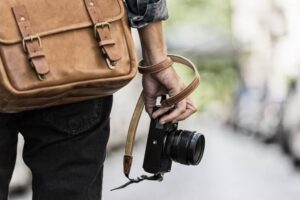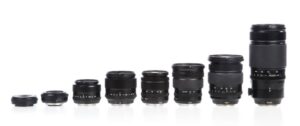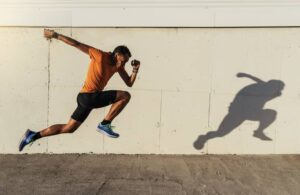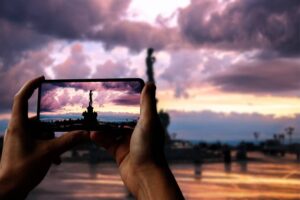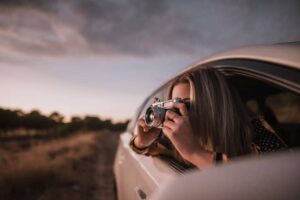I know you’re itching to get out and take some travel photos right now!
Or maybe that’s just me?
Time to plan for next year.
In the meantime, there’s no reason to limit the time you spend with your camera right now.
In fact, these days could be the perfect opportunity to invest some quality time getting to know your camera like a good friend.
Maybe there are some buttons you’ve always wondered about or features you meant to check out. Now is the perfect time to learn and practice.

Here are some ideas to get you started:
- Learn your autofocus system. Getting perfectly focused images is the number one thing most people struggle with on their cameras. Take some time to learn about your camera’s particular autofocus features and then try practicing with both stationary and moving subjects.
Remember that some cameras have focus switches on both the body and the lens. Start with a web search for your camera make and model – then “focus” – and you’ll find loads of information at your fingertips.
- Try all your lenses. If you have a lens kicking around that you don’t often use, give it a try on different subjects around your house or backyard.

- Play with white balance. If you’ve never touched your camera’s white balance setting, give it a go. By default, it’s probably set to “auto white balance” or “AWB”. While this works most of the time, it’s handy to understand how you can affect the mood of your image by warming it up or cooling it down with different white balance settings. Just remember to put it back to auto white balance when you’re done experimenting!
- Nail your exposure. If your subject sometimes comes out too light or too dark, try using exposure compensation to dial in your brightness to just the right level. Short of learning how to photograph in manual exposure mode, exposure compensation is your best bet for adjusting how bright or dark your photo is. On most cameras it’s indicated by a button or dial with a plus/minus symbol.

- Set up your tripod. When you put your camera on a tripod and point it at something like an apple, or a simple still life scene on your table, it allows you to fiddle with all of the settings and see immediate differences. For example, if you put your camera on a tripod and then set it to “Manual” mode, you can take a series of shots at a range of apertures or shutter speeds and learn what’s happening in a slow, controlled environment.
Taking some time to get to know your camera now will help you hit the ground running when life gets back to normal and we’re able to photograph out in the world again.



